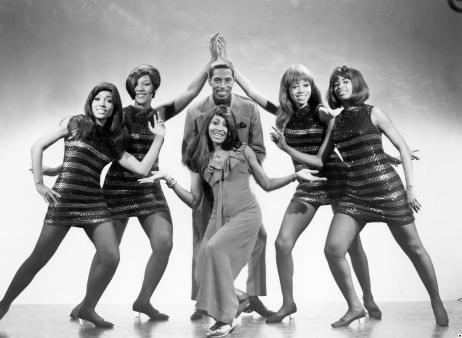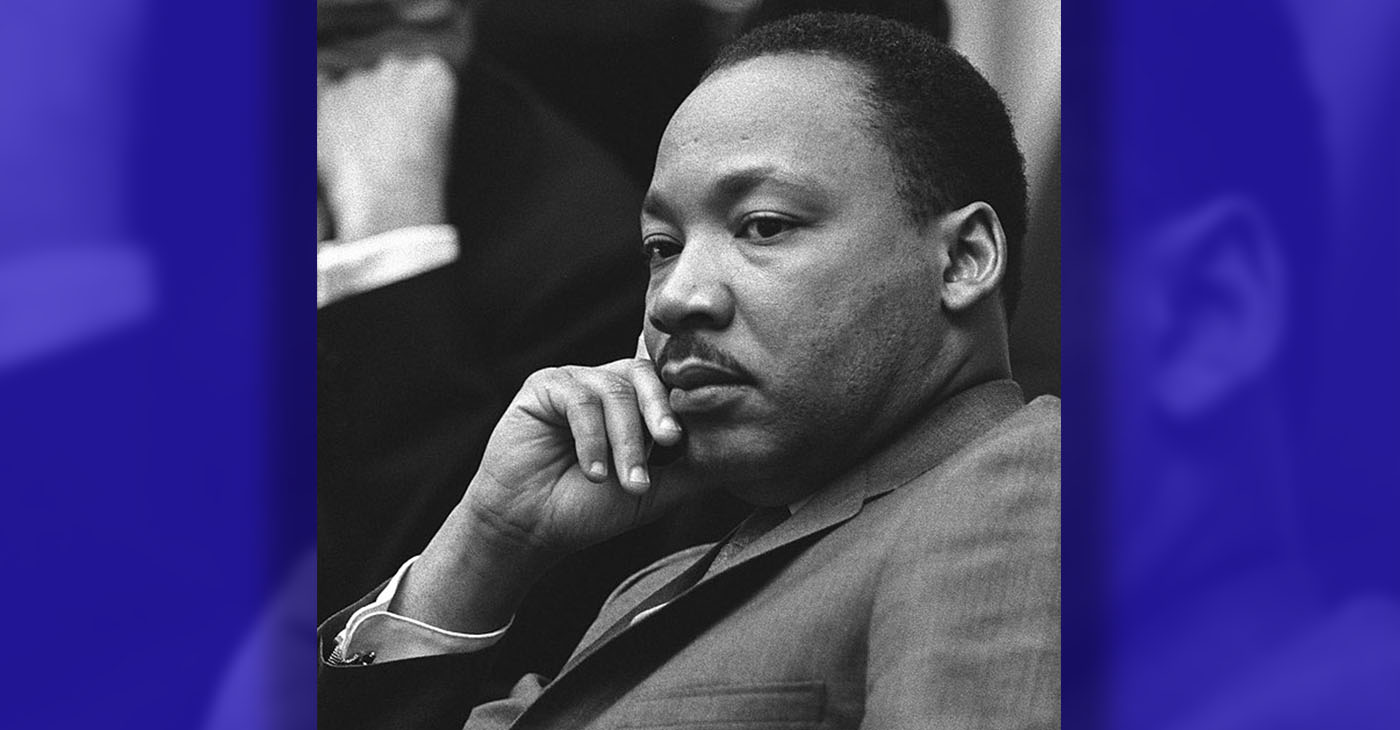#NNPA BlackPress
Remembering Tina: The Legendary “Queen of Rock ‘n Roll” Passes Away at 83
Tributes are pouring in for legendary singer, songwriter and actress Tina Turner, who died last Wednesday. She was 83. “Tina Turner, the ‘Queen of Rock’n Roll’ has died peacefully today at the age of 83 after a long illness in her home in Küsnacht near Zurich, Switzerland,” her publicist said on last Wednesday. “There will […]
The post Remembering Tina: The Legendary “Queen of Rock ‘n Roll” Passes Away at 83 first appeared on BlackPressUSA.

Tributes are pouring in for legendary singer, songwriter and actress Tina Turner, who died last Wednesday. She was 83.
“Tina Turner, the ‘Queen of Rock’n Roll’ has died peacefully today at the age of 83 after a long illness in her home in Küsnacht near Zurich, Switzerland,” her publicist said on last Wednesday. “There will be a private funeral ceremony attended by close friends and family. Please respect the privacy of her family at this difficult time.”

1964: Tina Turner of the husband-and-wife R&B duo Ike & Tina Turner poses for a portrait in 1964. (Photo by Michael Ochs Archives/Getty Images)
She was born Anna Mae Bullock on November 26, 1939, in Brownsville, Tennessee. She grew up in Nutbush, a tiny unincorporated community with a population of 259. Her parents, Floyd and Zelma Bullock were sharecroppers; Floyd supervised the harvests on the white-owned Poindexter farm. And the farm produced plenty. “Daddy’s garden must’ve covered an acre: Cabbages, onions, tomatoes and turnips, sweet potatoes, watermelons — we planted it all, and that garden fed us during the summer,” she wrote in her autobiography, I, Tina. “We had fresh eggs from our chickens and fresh milk from our cows.”
Anna Mae and her older sister Alline grew up in relative comfort. “Were we poor? I don’t remember being poor. My father was the top man on the farm; all the sharecroppers answered to him, and he answered to the owner. Daddy was in charge,” she later recalled. “We always had nice furniture in our house, and Alline and I always had our own separate bedroom.”
What they did not have was much in the way of closeness or affection. “I had no love from my mother or my father from the beginning, from birth,” she says in I, Tina. Her parents were often at odds and didn’t love each other: “Apparently, my mother had taken my father away from another girl — just out of spite […] they never really loved each other. They fought from the beginning,” she recalled. Those fights often turned physical.
When America entered World War II in 1941, Floyd and Zelma got jobs in the war effort. He worked as a laborer for a secret project; Zelma worked as a domestic in Knoxville, where the two stayed for over two years. The children stayed back home with grandparents. After the war, the Bullocks reunited with their children in Knoxville, then returned to Nutbush. Anna Mae attended Flagg Grove Elementary School from grades one through eight. That one-room schoolhouse is now the Tina Turner Museum.

CIRCA 1969: Tina Turner of the husband-and-wife R&B duo Ike & Tina Turner sings during a recording session in circa 1969. (Photo by Michael Ochs Archives/Getty Images)
When Anna Mae was 11, her mother abruptly moved to St. Louis. Zelma had finally left Floyd — and her kids. Shortly afterward, her father remarried and moved to Detroit, leaving Anna Mae and Alline behind. Anna Mae started working as a housekeeper and babysitter for the Hendersons, a young white family.
She and Alline moved to stay with their maternal grandmother for a time before Anna Mae moved back to the family farm with her paternal grandmother (whom she called “Mama Georgie”). But when Mama Georgie died, Anna Mae moved to St. Louis with her mother and sister. It was in St. Louis where Ike Turner and the Kings of Rhythm came to play.
Ike (born Izear Luster Turner in 1931) had a band: saxophonists, a guitarist, a drummer, and his nephew on bass. Ike played piano and guitar. The band played at clubs in east St. Louis. At that time, 17-year-old Anna Mae and 20-year-old Alline had started going out to local clubs. One night they went to the Club Manhattan, where the band was playing.
Transfixed by Ike’s guitar playing, Anna Mae returned over the next several weeks. People would get up and sing with the band at times during their shows, and Anna Mae longed to do the same. One night, she got her chance. While Ike was playing on the organ between sets, Anna Mae started singing along as Ike played the B.B. King song “You Know I Love You.” Ike was so blown away by her voice that he jumped offstage and asked if she knew any more songs. Anna Mae started singing with the band.
Zelma Bullock found out — and hit the roof. “She hit me a backhand lick to the side of my face,” Tina wrote later, “and when I saw it had given me a nosebleed, I nearly hit her back.” Zelma did not want her daughter out with Ike Turner. But he charmed her when he visited the house, promising that he’d take care of Anna Mae. Zelma agreed. Anna Mae resumed performing.

Husband-and-wife R&B duo Ike & Tina Turner pose for a portrait with their back up dancers “The Ikettes”, 1968. (Photo by Michael Ochs Archives/Getty Images)
“From then on, Ike and I were like brother and sister,” she wrote. He bought Anna Mae stage clothes and taught her about voice control and performance. They were strictly platonic at this point: Ike was living with a woman named Lorraine Taylor, and Anna Mae was falling for Ike’s saxophonist Raymond Hill. “I moved in with Raymond for a while,” she said years later. “We talked about marriage or whatever, but it didn’t happen. Soon he was gone.”
Soon she was pregnant. Anna Mae gave birth to their son Raymond Craig on Aug. 20, 1958. Zelma was displeased by her daughter being a teenage mother, so Anna Mae moved out into her own apartment and took a day job as a nurse’s assistant at Barnes-Jewish Hospital, the largest hospital in Missouri. But she would still sing with the band on dates. She even recorded with them; on the 1958 song “Boxtop,” she earned her first recording credit (billed as “Little Ann”).
Shortly thereafter, her relationship with Ike changed. They had been close friends: sometimes Anna Mae would even sleep over at Ike and Lorraine’s place. But while Ike was broken up with Lorraine, one of the musicians threatened to come into Anna Mae’s room (there were no locks). Instead, she shared a bed with Ike — who had more than just sleeping on his mind.
As their personal relationship turned romantic, their working relationship also changed. In 1959, Ike wrote “A Fool in Love” for Art Lassiter, whom he’d chosen as the band’s lead singer. But Art never showed up for the recording session. So Ike had Anna Mae sing on the demo. The demo tape found its way to Juggy Murray, head of Sue Records. He told Ike the song worked better with a girl singer and signed Ike to a record contract. Ike changed Anna’s name (Tina rhymed with Sheena, Queen of the Jungle, one of his favorite TV shows) and the name of the band: to the Ike and Tina Turner Revue.

American singer, songwriter, and actress Tina Turner performs at the Brighton Centre, Brighton, UK, 11th March 1985. (Photo by John Rogers/Daily Express/Hulton Archive/Getty Images)
Anna Mae had reservations about the name change — and their relationship. “I didn’t want our relationship to go any farther,” she later wrote. I knew it could never work out between us.” She told Ike how she felt; he grabbed a shoe stretcher and beat her with it.
Tina felt trapped: “As horrible as he treated me, I still felt responsible for letting him down,” she told Rolling Stone in 1986. “And I was afraid to leave. I knew I had no place to hide, because he knew where my people were. My mother was actually living in Ike’s house in St. Louis. My sister was living in an apartment basically rented by Ike.”
So she stayed — and became Tina Turner.
“A Fool in Love”
By January 1960, Tina was pregnant — this time by Ike (who had gotten back together with Lorraine). Tina developed hepatitis and then jaundice; she spent six weeks in the hospital. Meanwhile, the record that would make her a star was gaining traction. Ike decided to go on tour. He snuck Tina out of the hospital and onto the road.
“A Fool in Love” was released in July 1960. In August, it hit No. 2 on the R&B charts, and in October it peaked at No. 27 on the pop charts — just as Ike and Tina were appearing on “American Bandstand.” Despite being eight months pregnant, Tina was doing shows in Vegas, dancing and singing with her background singers (whom Ike named the Ikettes). Only in Vegas did Ike realize Tina might need to visit a hospital.
They hightailed it to L.A., where Tina gave birth to their son Ronald Renelle on Oct. 27, 1960. A fed-up Lorraine left Ike for good. Once Tina was out of the hospital, she did a show in Oakland before taking two weeks to recover. But recovery was difficult. She was already unhappy by 1961, writing later that Ike was “totally unpredictable.” “Out of nowhere, he would leap up from a couch and walk right up to you and —pow! And you’d go, ‘What did I do? What’s wrong?’ Pow! again,” she wrote. “It was insane. It got to be that I always had a black eye and a busted lip — that was the standard beat-up.”
But she still accepted his proposal. One night, during a moment of tenderness, Ike asked Tina to marry him. She said yes “because if you said no to Ike, you were going to get beat up a few days later.” They rode to Tijuana, found a justice of the peace and married in 1962. Ike bought a house in L.A.; he and Tina brought their son Ronald, Tina’s son Raymond Craig, and Ike’s sons Michael and Ike, Jr. from St. Louis to live with them. But they were rarely home. Ike & Tina had several more hit singles, including “I Think It’s Gonna Work Out Fine” (No. 2 R&B, No. 14 pop) in 1961. But most of their income came from constant touring.

ZURICH, SWITZERLAND – MAY 14: Tina Turner smiles during the presentation of the music project ‘Beyond – Three Voices For Peace’ on May 14, 2009 in Zurich, Switzerland. The CD contains a spiritual message by Tina Turner. (Photo by Miguel Villagran/Getty Images)
“River Deep, Mountain High”
In 1966, record producer Phil Spector negotiated a contract with Ike to record with Tina. His song: “River Deep, Mountain High.” “I loved that song,” Tina said in her autobiography. “Because for the first time in my life, it wasn’t just R&B — it had structure, it had a melody.” The song failed in the United States but was a smash overseas, peaking at No. 3 on the UK charts. Within months, Ike and Tina were touring with the Rolling Stones. Band members Mick Jagger and Keith Richards became Tina’s lifelong friends.
But Tina’s depression deepened after she and Ike returned to America. Ike’s violence and philandering continued; he got Ann Thomas, one of the Ikettes, pregnant. “When I found out that Ann was pregnant by Ike, I lost all feeling for him as my husband,” she later wrote. That was it.” Worse yet, Ike started using cocaine, which made him even more violent and unpredictable: “Ike was beating me with phones, with shoes, with the hangers, choking me, punching me—it wasn’t just slapping anymore.”
In 1968, Tina attempted suicide by swallowing 50 Valium; she had to have her stomach pumped. But when she got out of the hospital, Ike made her go right back to work. And when Tina developed bronchitis a year later, he was unrelenting. Tina kept working, and it turned into tuberculosis. But after a couple weeks in the hospital, she was back on the road.
In 1970, at Tina’s encouragement, they shifted musically, from R&B to rock & roll. The move paid off with the 1970 albums Come Together and Workin’ Together. The first album featured a cover of Sly Stone’s “I Want to Take You Higher.” The second became their highest-charting album. It contained their cover of a song by rock band Credence Clearwater Revival: “Proud Mary.” Ike and Tina remade the song, with Tina’s famous “nice and easy” opening. Their version became their biggest hit ever, soaring to No. 4 on the Billboard charts and selling over a million copies. It won them a Grammy for Best R&B Performance.
Tina wrote the group’s last major hit, a song about her hometown: “Nutbush City Limits” (1973). But the hits soon dried up. Ike became more volatile as his cocaine addiction worsened, while Tina discovered Buddhism and used chanting as a form of solace. In 1974 she landed a role in Tommy (1975), playing the Acid Queen in the filmed version of the Who’s rock opera. “It was a small part,” she wrote later, “but it was my part. It gave me strength. I could feel myself growing.”

NEW YORK, NEW YORK – NOVEMBER 07: Tina Turner and Adrienne Warren speak during “Tina – The Tina Turner Musical” opening night at Lunt-Fontanne Theatre on November 07, 2019 in New York City. (Photo by John Lamparski/Getty Images)
That growth annoyed Ike, who resented Tina succeeding without him. Things got worse: he once threw a pot of boiling hot coffee in her face, causing third-degree burns. As the boys neared adulthood and the abuse continued, Tina found fewer reasons to stay. Gradually, she started leaving: once for three days, then for two weeks. Upon returning, she told Ike: “I really cannot stay with you any longer.”
Ike didn’t listen. He lined up gigs around the time of America’s bicentennial; they’d play in Dallas during 4th of July weekend. On July 3, 1976, they flew to Dallas, where they were scheduled to perform at a Hilton hotel. On the way to the airport, signs of trouble were already brewing: Tina had on a white Yves St. Laurent suit, Ike had a box of chocolates that was melting in the Texas sun. He offered them to Tina; she said no. He backhanded her.
After their flight, they arrived at the DFW airport and rode to the hotel. Inside the limo, Ike backhanded Tina again. This time, she fought back. He kept hitting, and so did she. “By the time we got to the Hilton, the left side of my face was swollen out past my ear and blood was everywhere,” Tina wrote. They went up to their room, where Ike fell asleep. Tina grabbed her toiletry bag and left. She ran out of the back of the hotel, down an alley, and across a freeway. She arrived at the Ramada Inn with just 36 cents and a Mobil gas card, promising the owner that she’d pay him back. He agreed. When she woke up the next morning, it was July 4, 1976 — Independence Day.
Tina filed for divorce later that month; the divorce was finally settled in 1978. (She walked away with just her two Jaguars — and her name.) She started staying at friends’ houses, cleaning them as payment. Then she started working on a new act. When Roger Davies became her manager in 1979, Tina was performing cabaret at nightclubs; he steered her back towards rock. Tina opened for the Stones in 1981.
In 1982, Heaven 17, the British synth-pop band, recruited her to sing a remake of the Temptations’ “Ball of Confusion.” The song led to a new record deal for Turner with Capitol Records. Roger Davies then suggested that she and Heaven 17’s Martyn Ware cut a remake of Al Green’s “Let’s Stay Together.” Tina’s version hit the Top 30 in the U.S. With that, and the support of her friend David Bowie, Turner began recording her Capitol debut, Private Dancer.
Released in June 1984, Private Dancer was critically acclaimed and hit No. 3 on the Billboard album chart, where it stayed for three months. (Blocking it from number one were Purple Rain and Born in the USA.) The album went multiplatinum, selling over five million copies in the U.S. and over 10 million worldwide. The title track hit the Top 10 on both the R&B and pop charts; so did “Show Some Respect.”
The lead single, “What’s Love Got to Do with It?” hit No. 1 in September. It was Tina’s first (and only) number-one hit. At 45, she became the oldest female singer ever to top the Billboard singles chart. And at the 1985 Grammy Awards, “What’s Love” won for Best Female Pop Vocal performance, Song of the Year, and Record of the Year. (“Better Be Good to Me” won for Best Rock Performance.)
That year, Tina played the villain Aunty Entity in Mad Max: Beyond Thunderdome. The film was a box-office hit, and Tina won an NAACP Image Award for best actress. She recorded two songs for the soundtrack: “We Don’t Need Another Hero” (which hit No. 2 on Billboard) and “One of the Living” (which won her another Grammy for Best Rock Performance).
In 1986, Turner released her next album, Break Every Rule. The lead single “Typical Male” also peaked at No. 2, and “Back Where You Started” earned Turner her third straight Grammy for Best Rock Performance. She also published her best-selling autobiography I, Tina. And she found love again, this time with German record executive Erwin Bach.
Bach was assigned to pick her up from the airport in 1985; sparks flew immediately. “It was love at first sight,” Turner told Oprah Winfrey in an interview. “He had the prettiest face. You could not miss it. It was like saying, ‘Where did he come from?’ He was really that good looking.” Despite the age difference (he was 30; she was 46), she and Bach connected. In her 2020 book Happiness Becomes You: A Guide to Changing Your Life for Good, she credited him with teaching her how “to love without giving up who I am.”
“We grant each other freedom and space to be individuals at the same time we are a couple,” Turner wrote. “Erwin, who is a force of nature in his own right, has never been the least bit intimidated by my career, my talents, or my fame. He shows me that true love doesn’t require the dimming of my light so that he can shine. On the contrary, we are the light of each other’s lives, and we want to shine as bright as we can, together.”
And shine she did. In 1987, Turner embarked on her “Break Every Rule” tour, one of the year’s highest-grossing. In Brazil in 1988, she fulfilled a long-held dream by selling out a massive stadium. 180,000 people came to see Tina Turner at the Maracana Stadium in Rio, setting a record for the largest paid concert by a female artist.
The next year, Turner released the album Foreign Affair, which produced one of her most timeless singles, “The Best.” The album title reflected its production in London and Paris. But it also described Tina’s personal life: when she turned 50 in 1989, Bach asked her to marry him. She refused, but the two continued to live together.
In 1993, Tina re-recorded some of her hits for the soundtrack of What’s Love Got To Do With It? (1993), based on her book. She also recorded a new single: “I Don’t Wanna Fight,” her last top 10 hit. Both Angela Bassett and Laurence Fishburne earned Oscar nominations for their portrayals of Ike and Tina Turner.
In 1995, Tina and Bach moved to Switzerland. She toured to support her albums Wildest Dreams (1996) and Twenty Four Seven (1999). Even when she wasn’t performing, she could still sell records: her 2004 greatest-hits album All the Best went platinum, becoming her highest-charting record. In 2008, she embarked on her final tour: a six-month farewell journey around the world. She officially retired in 2009.
In 2013, Turner and Bach finally married, cementing what she called “a long, beautiful relationship — and my one true marriage.” But according to Closer Weekly, Turner suffered a stroke just three months after marrying Erwin. She spent 10 days in the hospital and had to relearn how to walk. She was diagnosed with colon cancer in January 2016. A month later, she underwent surgery to remove the cancerous part of her intestine. But high blood pressure damaged her kidneys.
“By December 2016, my kidneys were at a new low of 20 percent and plunging rapidly. And I faced two choices: either regular dialysis or a kidney transplant,” she wrote in her 2018 memoir, Tina Turner, My Love Story. “Only the transplant would give me a very good chance of leading a near-normal life. But the chances of getting a donor kidney were remote.” Thankfully, Bach donated one of his. “I’m happy to say that, thanks to my beloved husband, Erwin, giving me one of his kidneys, the gift of life, I’m in good health and loving life every day,” she wrote in the book. “I’m also thankful that I’ve not only survived, but thrived, so that I can pass on to you this book containing precious gifts that were given to me — the greatest gifts I can offer.”
She had one last gift for her fans. Tina, a musical based on her life, premiered in London in 2018 and on Broadway the following year. Adrienne Warren, who played the title role, won a Tony in 2020 for Best Performance by a Leading Actress in a Musical. Upon learning of Turner’s passing, Warren paid tribute to the woman she played: “Today I lost a teacher and a mentor,” Warren captioned her post. “Rest, my friend. I love you, Anna Mae Bullock. Thank you.”
“My beloved queen, I love you endlessly,” Beyoncé wrote on her website. “I’m so grateful for your inspiration, and all the ways you have paved the way […] You are the epitome of power and passion. We are all so fortunate to have witnessed your kindness and beautiful spirit that will forever remain. Thank you for all you have done.”
Lizzo paid tribute to Turner with a performance of “Proud Mary” during her tour stop. “Today we lost an icon,” a visibly emotional Lizzo told the crowd at Footprint Center in Phoenix. “I haven’t allowed myself to be sad, I haven’t allowed myself to cry. I don’t want to right now, because I’d much rather celebrate.” She added: “As a Black girl with a rock band, I wouldn’t exist were it not for the queen of rock & roll.”
The post Remembering Tina: The Legendary “Queen of Rock ‘n Roll” Passes Away at 83 appeared first on Houston Forward Times.
The post Remembering Tina: The Legendary “Queen of Rock ‘n Roll” Passes Away at 83 first appeared on BlackPressUSA.
#NNPA BlackPress
Lawmakers Greenlight Reparations Study for Descendants of Enslaved Marylanders
BLACKPRESSUSA NEWSWIRE — Maryland lawmakers have approved Senate Bill 587, authorizing the creation of the Maryland Reparations Commission.

By Stacy M. Brown
BlackPressUSA.com Senior National Correspondent
Maryland lawmakers have approved Senate Bill 587, authorizing the creation of the Maryland Reparations Commission. The body will study and make recommendations for reparations to descendants of enslaved people and others harmed by centuries of discriminatory policies. The legislation now awaits the governor’s signature and is scheduled to take effect July 1, 2025. The commission will examine Maryland’s long history of slavery, the economic and social systems that benefited from it, and the lingering impacts of those institutions. Its work will include recommendations on financial compensation, housing and business support, tuition waivers, and other forms of restitution. “This commission is not only about acknowledging our past – it’s about using that understanding to pave the way for a more equitable and fair future,” said Del. Jheanelle Wilkins, Chair of the Legislative Black Caucus of Maryland, which made reparations a top priority for the first time this legislative session.
From its founding in 1634 until the abolition of slavery in 1864, Maryland was a society built on slave labor. Tobacco, the colony’s staple crop, fueled economic growth and political dominance for the state’s elite. By the mid-18th century, nearly one-third of Maryland’s population was enslaved. Skilled and unskilled laborers like Frederick Douglass, who caulked ships in Baltimore, contributed to the state’s prosperity under brutal conditions. The legacy of that bondage continued to echo across generations. Del. Aletheia McCaskill, the lead sponsor of the House version of the bill, said the measure lays the groundwork for redress. “I am overjoyed at the passage of this monumental legislation,” McCaskill said. “This commission will gather historical evidence, examine present-day disparities, and provide a data-driven framework to acknowledge past harms. By recommending policies and developing solutions to repair the damage done, we can take meaningful steps toward true equity in our state.”
Sen. C. Anthony Muse, sponsor of the Senate version, called the passage historic. “We took a historic step towards justice and healing for our communities,” Muse remarked. “The passage of Maryland Senate Bill 587 marks a significant commitment to addressing the long-lasting effects of slavery and systemic inequities.” The commission’s membership will include lawmakers, historians, HBCU scholars, civil rights experts, representatives from the NAACP and the Maryland Black Chamber of Commerce, and members of the public. It will examine reparations programs in other states and recommend procedures for verifying eligibility and the feasibility of funding and distributing reparations. Maryland’s history makes it a powerful setting for this initiative. The state witnessed the forced transport of nearly 100,000 Africans during the 18th century. The rise of tobacco plantations led to a devastating regime marked by family separation, disease, forced labor, and systemic brutality. Enslaved individuals in Maryland built canals, smelted iron, and helped fuel the economic engine of the state while living under constant threat of sale or violence. The stories of individuals like Hillery Kane at Sotterley Plantation and Lucy Jackson at Hampton Mansion reveal not only the cruelty of slavery but also the resilience and resistance of the enslaved.
By the 19th century, Maryland became a central player in the domestic slave trade, with an estimated 20,000 people sold to cotton plantations in the Deep South between 1830 and 1860. Even after emancipation in 1864, freed Black Marylanders faced decades of disenfranchisement, segregation, and economic exclusion. “This is about more than history,” Wilkins said. “It’s about how that history has shaped the realities of today.” The commission will submit a preliminary report by January 1, 2027, and a final report by November 1, 2027. It will explore possible sources of funding, such as businesses and institutions that benefited from slavery and discriminatory government practices.
Opposition to the bill has centered mainly on its cost, but the fiscal note details only a modest increase of $54,500 in 2026 to fund contractual staff. No reparations payments are authorized under the current bill. Maryland is joining California, Colorado, Illinois, Massachusetts, and New York in forming a reparations commission. The move comes as diversity, equity, and inclusion initiatives face increasing national scrutiny and political attacks. Still, supporters of the commission insist the time for reckoning is now. “We’re not just commemorating the past,” McCaskill said. “We are charting a course toward justice, informed by our truth and grounded in our responsibility to future generations.”
#NNPA BlackPress
Harris, Obama, and Booker Step Up as Resistance Against Trump Takes Shape
BLACKPRESSUSA NEWSWIRE — Obama, meanwhile, broke his silence during an appearance at Hamilton College in New York, offering one of his sharpest public critiques yet of Trump’s second administration.

By Stacy M. Brown
BlackPressUSA.com Senior National Correspondent
Is the resistance finally taking form?
As Kendrick Lamar asked during his powerful Super Bowl performance, “Are we really about to do it?” That question now echoes in the political arena as former President Barack Obama and former Vice President Kamala Harris have entered the public fray, joining voices like New Jersey Sen. Cory Booker and Texas Rep. Jasmine Crockett in confronting President Donald Trump and his administration’s sweeping changes head-on. After months of relative silence following her defeat to Trump last November, Harris returned to the spotlight Thursday during a rare appearance at the Leading Women Defined conference at a seaside resort in Dana Point, California. According to The Los Angeles Times, she didn’t mention Trump by name but spoke forcefully about the anxiety many Americans are experiencing under his new administration.
“There is a sense of fear that is taking hold in our country, and I understand it,” Harris said. “These are the things that we are witnessing each day in these last few months in our country, and it understandably creates a great sense of fear. Because, you know, there were many things that we knew would happen, many things.” “I’m not here to say, ‘I told you so,’” she continued. “I swore I wasn’t going to say that.” The appearance marked a shift in tone for Harris, who has been weighing a potential run for governor of California in 2026 or waiting until 2028 for another shot at the presidency. Still, she clarified that her political silence hasn’t equated to surrender. “We can’t go out there and do battle if we don’t take care of ourselves and each other,” Harris told the crowd. “I’ll see you out there. I’m not going anywhere.”
Obama, meanwhile, broke his silence during an appearance at Hamilton College in New York, offering one of his sharpest public critiques yet of Trump’s second administration. He condemned Trump’s attempts to reshape the federal government, stifle dissent, and punish those who oppose his policies. “So, this is the first time I’ve been speaking publicly for a while,” Obama said. “I’ve been watching for a little bit.” “Imagine if I had done any of this,” Obama added. “It’s unimaginable that the same parties that are silent now would have tolerated behavior like that from me or a whole bunch of my predecessors.” While calling Trump’s proposed tariffs bad for America, Obama said his larger concern lies with what he described as the White House’s alarming overreach.
“I’m more deeply concerned with a federal government that threatens universities if they don’t give up students who are exercising their right to free speech,” he said. “The idea that a White House can say to law firms, if you represent parties that we don’t like, we’re going to pull all our business or bar you from representing people effectively. That kind of behavior is contrary to the basic compact we have as Americans.” Obama, who campaigned for Harris during the final stretch of the 2024 election, had warned that a second Trump term would endanger the nation’s democratic norms. “Just because [Trump] acts goofy,” Obama said at the time, “doesn’t mean his presidency wouldn’t be dangerous.” With Trump’s second term underway, the voices of resistance are growing louder.
Sen. Cory Booker added fuel to the movement by making history on the Senate floor. He delivered a 25-hour, 5-minute filibuster that broke the record previously held by segregationist Sen. Strom Thurmond. Thurmond’s 1957 filibuster—lasting 24 hours and 18 minutes—was aimed at blocking the Civil Rights Act. Booker used his record-breaking speech to denounce what he called a deliberate dismantling of government at the hands of Trump, Elon Musk, and Congressional Republicans. “It always seemed wrong,” Booker said, referring to the Senate room still named after Thurmond. “It seemed wrong to me when I got here in 2013. It still seems wrong today.”
The New Jersey senator, a descendant of both enslaved people and slave owners, framed his marathon speech as a moral plea, reading letters from Americans affected by deep cuts and policy threats to Medicare, Medicaid, Social Security, and SNAP. “This is a moral moment,” Booker declared. “It’s not left or right; it’s right or wrong.” With Booker’s record-setting stand, Harris’s reemergence, and Obama’s warning shots, what once felt like fragmented frustration among Democrats may now be coalescing into something more deliberate: a resistance that is finally, visibly, on the move. “I’ll see you out there,” Harris said. “I’m not going anywhere.”
#NNPA BlackPress
Dr. King and the Reason He Protested on His Assassination Anniversary
BLACKPRESSUSA NEWSWIRE — King was in Memphis to support striking African-American sanitation workers upset over poor working conditions and low pay. At his death, King also organized the Poor People’s Campaign to address poverty and economic inequality.

By April Ryan
The Media Panel at the National Action Network Convention in the NYC
“What would Martin do?” asked Mary Francis Berry, the former head of the U.S. Commission on Civil Rights. Berry was a college student when the news reports were delivered that Dr King was assassinated. More than half a century ago today, Dr. Martin Luther King Jr. was fatally shot on the balcony of the Lorraine Motel in Memphis, Tennessee. King was in Memphis to support striking African-American sanitation workers upset over poor working conditions and low pay. At his death, King also organized the Poor People’s Campaign to address poverty and economic inequality. Almost 60 years later, African Americans are withholding their dollars from companies like Target that have rolled back Diversity, Equity, and Inclusion programs. Target’s stock has dropped drastically, and it is reported that the company has lost billions of dollars from this action. On a related note, the National Urban League says that Black America’s buying power is close to $2 trillion. Major rallies around the nation, the majority of which are white-led, are protesting a new rollback in rights and freedoms created by the Trump agenda.
Thursday, in New York City, at the National Action Network convention during the media panel, the crowd in the packed ballroom stood to their feet, pumping their fists and shouting, “he’s a racist, “directing their ire at President Donald Trump. Freedom to protest in this country during difficult times is a blueprint Dr. Martin Luther King Jr. and his lieutenants left during the civil rights era. Berry remembers consulting with Dr. King’s widow, Coretta Scott King, and wondering what the civil rights icon would do whenever they started a protest like the “Free South Africa” movement and protests against the “unfair treatment of Haitians” and the “LGBTQ+ people and whatever.” The “checklist” of items to confirm this is what Dr. King would support is included in his book Where Do We Go From Here? The questions are: “Is it safe? Is it political? Is it popular? Is it right?” Protests and boycotts abound in this nation, and a significant protest is slated for this Saturday in Washington, D.C. 1000,000 people are expected to show up and protest against the MAGA and Project 2025 agenda Donald Trump follows. Berry reminds us that Dr. King supported peaceful protests and economic boycotts. At age 26, King led a nonviolent protest against segregated bus seating in Montgomery, Alabama, a pivotal event in the civil rights movement.
-

 Activism2 weeks ago
Activism2 weeks agoWe Fought on Opposite Sides of the Sheng Thao Recall. Here’s Why We’re Uniting Behind Barbara Lee for Oakland Mayor
-

 #NNPA BlackPress2 weeks ago
#NNPA BlackPress2 weeks agoRev. Dr. Jamal Bryant’s Black Church Target Boycott Mobilizes 150,000
-

 Activism3 weeks ago
Activism3 weeks agoSan Francisco Is Investing Millions to Address Food Insecurity. Is Oakland Doing the Same?
-

 #NNPA BlackPress2 weeks ago
#NNPA BlackPress2 weeks agoRecently Approved Budget Plan Favors Wealthy, Slashes Aid to Low-Income Americans
-

 Activism2 weeks ago
Activism2 weeks agoFaith Leaders Back Barbara Lee for Mayor, Criticize Candidate Loren Taylor for Dishonest Campaigning
-

 Activism3 weeks ago
Activism3 weeks agoOakland Post: Week of March 12 – 18, 2025
-

 Activism2 weeks ago
Activism2 weeks agoGroup Takes First Steps to Recall District Attorney Diana Becton
-

 #NNPA BlackPress3 weeks ago
#NNPA BlackPress3 weeks agoPRESS ROOM: The Urban One Podcast Network Announces Los Angeles Wildfires Podcast, ‘Altadena: After the Fire’



















































